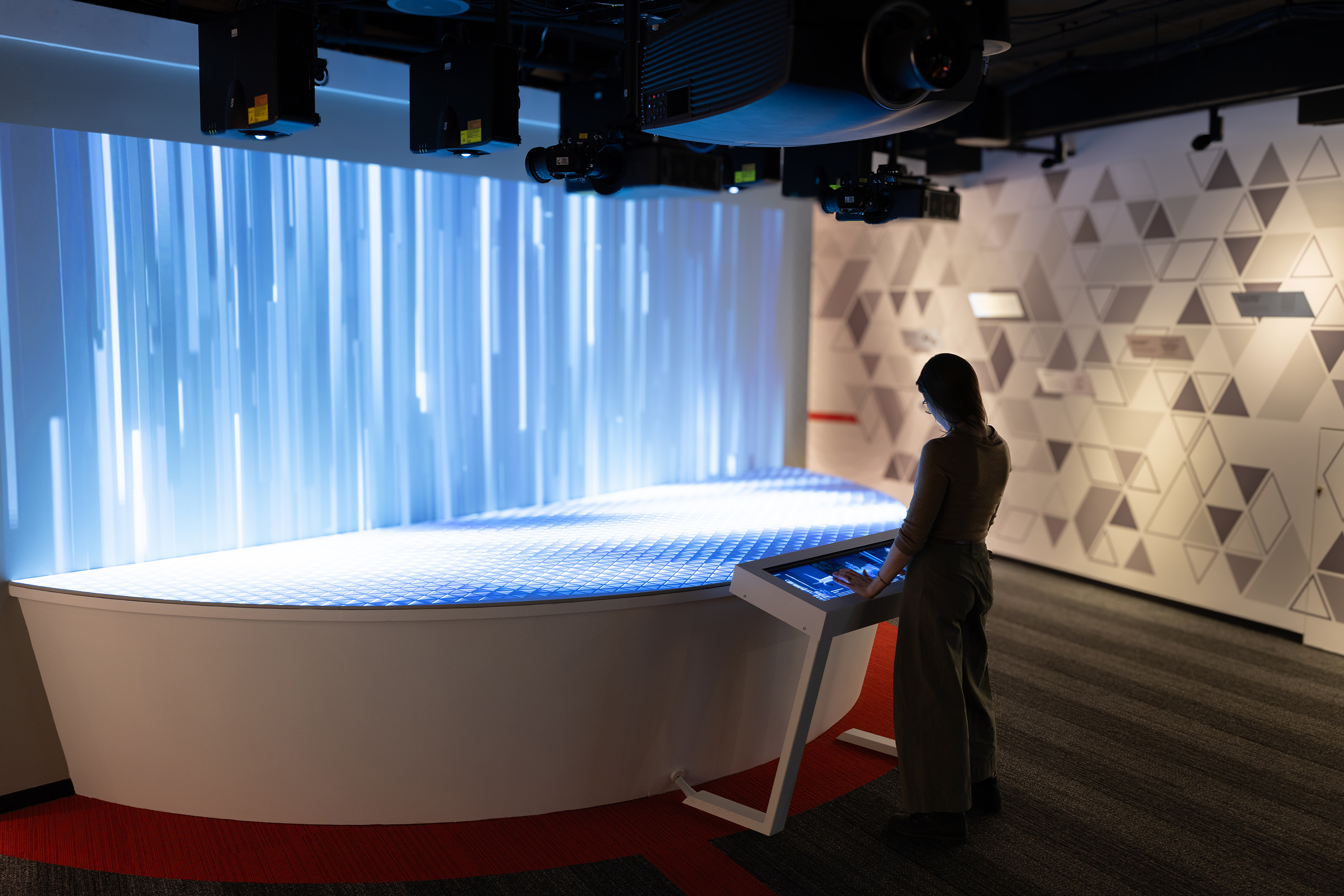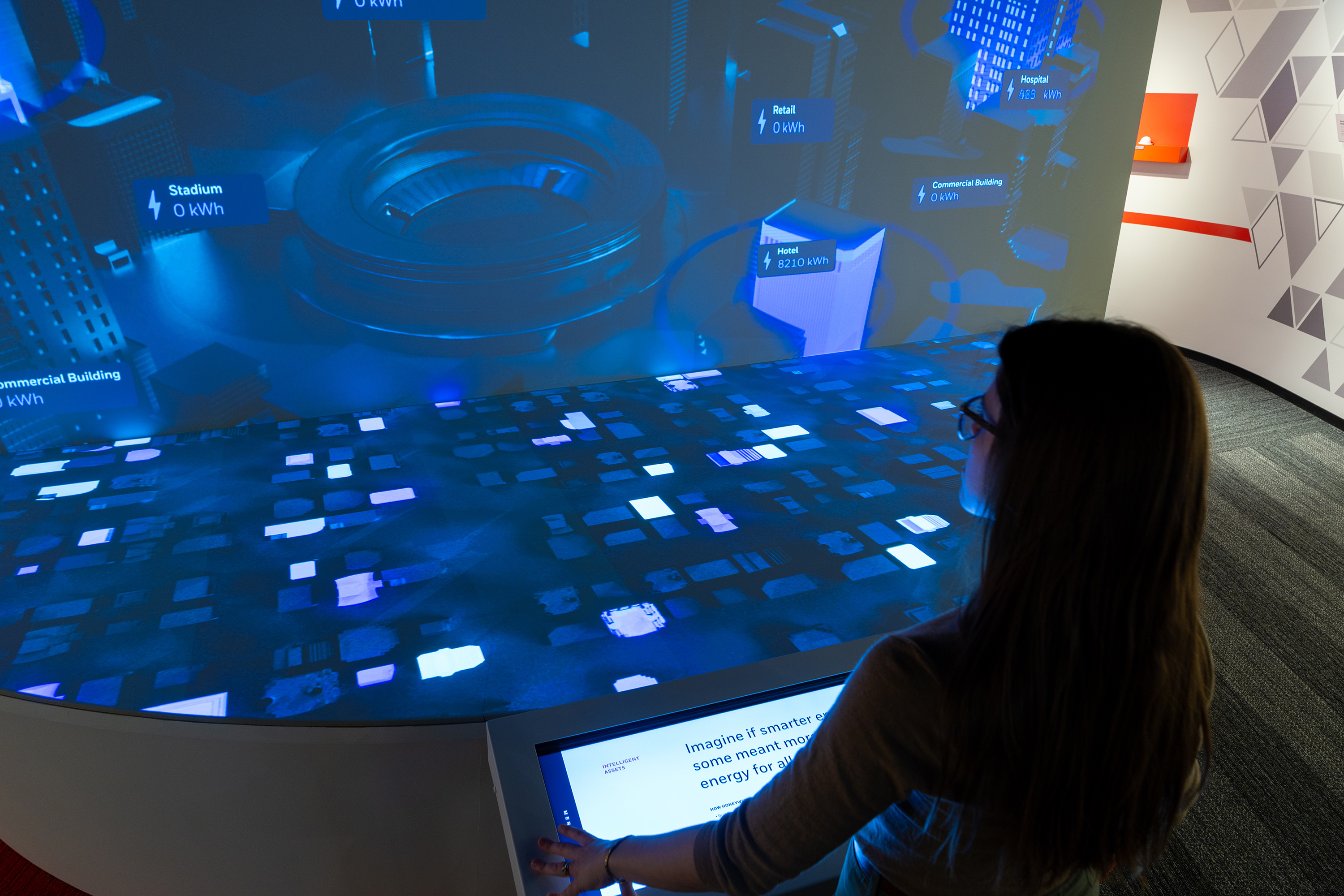When we talk about immersive environments or technology-driven spaces, the conversation too often centers on what people see: a massive LED wall, an interactive installation, a seamless projection. But behind the scenes, what actually makes these experiences successful isn’t any single piece of technology. It’s how all the pieces and disciplines work together.
That’s where integrated experience thinking comes in.
Integrated experience thinking is an approach that asks us to stop viewing design, content, and technology as isolated components. Instead, it asks us to see them as interconnected: a living, dynamic ecosystem that needs to function holistically. In the context of storytelling spaces, this means looking beyond the surface to understand how the space operates over time, how people interact with it, and how technology supports those moments of engagement.
When Good Design Fails: The Hidden Risks of Static Systems
A few months ago, a client reached out about a high-profile space they had launched the previous year. It looked great on paper, and the installation was technically sound. Now, a year later, their team had stopped using parts of it. Content hadn’t been updated. Staff avoided certain areas. And while nothing was technically “broken,” it just wasn’t serving its purpose anymore as the client’s needs adapted over time. The integrated experience, in a broader sense, had failed, not because the tech wasn’t good, but because the experience wasn’t designed to evolve.
This happens more often than people realize. A space opens, the ribbon gets cut, and everything works as intended. But if the back-end systems are too rigid, the CMS too complicated, or the workflow for updating content too vague, then that immersive space starts to degrade. Not physically, but functionally and emotionally. It becomes harder to maintain, harder to update, and eventually, easier to ignore.
This is the kind of gap integrated experience thinking helps us avoid.

Designing for the Long Haul: Embedding Strategy from Day One
Every experience should be built not just for launch day, but for the long haul. That starts by embedding strategy and technology design thinking into the earliest stages of concept development, before construction drawings are issued, before screens are spec’d, before budgets are locked. The sooner we can ask the right questions about longevity, flexibility, and intent, the better the outcome.
We often work with incredible AV integrators and partners, but historically they’re brought in late, after decisions about layout, infrastructure, or story have already been made. That leads to retrofit thinking. The tech has to conform to decisions it wasn’t part of, and the experience becomes a puzzle of workarounds rather than a cohesive narrative.

Spaces That Grow with You: Learning and Adapting Post-Launch

We remind our clients that making adjustments after opening is not a failure. It's part of the process.
This is exactly where a role like mine comes in. As a technologist working for a creative strategy and design company, I help bridge the gap between the story and the experience, between the creative vision and the engineering reality. I sit between disciplines to make sure what we dream up can be delivered, and what gets delivered still tells the right story. By helping guide those conversations early, I work alongside AV partners and creative teams to ensure that what we build is as thoughtful behind the walls as it is in front of them.
When we approach a space as an integrated experience from day one, the results are dramatically different. The story flows more naturally. The tools chosen, whether they’re screens, sensors, or sound, don’t distract or dominate – they complement. The infrastructure is designed to adapt, making it easy for teams to update content and keep the experience relevant without needing to start from scratch every time the business changes direction.
It is important to recognize early on that while we strive for perfection in design, we often find out how things are really working within the first six months of a space opening. Once real people are using the space, when a docent has to pivot on the fly based on the conversation at hand, or when an unexpected use case emerges, we learn. We remind our clients that making adjustments after opening is not a failure. It's part of the process. These spaces are alive, and small changes post-launch are not only normal, they're necessary. Our job is to stick with our clients and make it easy to adapt.
Designing for future and ongoing needs doesn’t always mean predicting everything that could happen. There are several things that leave space to adapt.
Flexible CMS A content management system that allows easy updates and changes as needs evolve.
Modular Components Physical and digital components that can be rearranged, replaced, or upgraded without major overhauls.
Remote Access The ability to monitor, update, and manage the system from anywhere.
Clear Governance Model Defined roles and responsibilities for who updates what and when, to ensure ongoing relevance and smooth operations.
Process, Teams and Planning A workflow that anticipates adjustments and includes clear protocols for implementing updates with ongoing training for people who maintain it.
Regular Check-ins and Feedback Loops -Establish a structured cadence of check-ins to review real-world performance and proactive adjustments for evolving needs.
A Collaborative Future: How Teams, Tools, and Strategy Align for Success
Integrated experience thinking also extends beyond technology. It includes the people who will maintain it, the team who will manage the messaging, the audience who will walk into the space six months from now. A successful experience isn’t just what happens when everything goes right. It’s how gracefully it continues to perform when things inevitably shift.
This kind of thinking requires collaboration. It takes architects who are open to rethinking layout based on experience and content goals. It takes brand strategists who understand how a story unfolds spatially. It takes AV partners who see the value in flexible systems. And it takes clients who are willing to invest in thinking ahead, not just building fast.
When all of that comes together, the result is an experience that doesn’t just look impressive, but actually works. It stays relevant. It earns its keep. And it continues to support the mission it was built for, long after the headlines fade.
Storytelling spaces are not one-time installations. They are living, breathing integrated experiences. When we design them with that mindset, we create experiences that evolve, connect, and endure.

